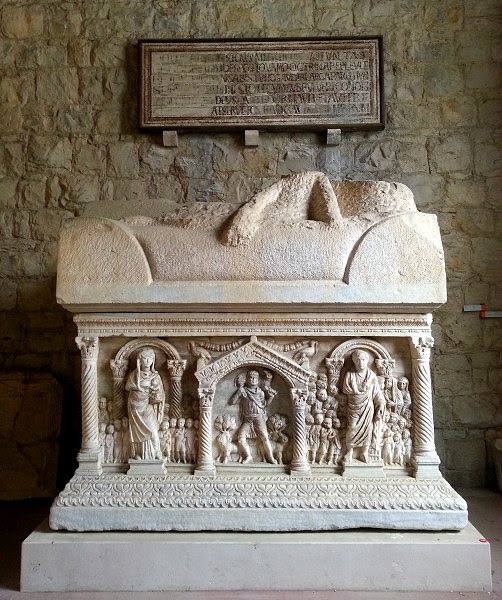As the oldest museum institution in Croatia, the Museum was founded in 1820 by the decree of the Dalmatian government in Zadar. The original museum building was erected in 1821 next to the eastern walls of Diocletian's Palace ( see previous blog ), but soon became too small to house the growing number of monuments, so in 1914 construction on the present building commenced.
Under the guidance of Catholic Priest Father Frano Bulic - a keen archaeologist, historian, and conservator, who, since 1884 had been working as a field researcher, conservator and writer as well as the director of the Split Museum - work on establishing the Museum soon came to a halt because of the Great War - the new building was not to open its doors to the public until 1922.
The Museum today houses some 150,000 artifacts - ranging in date from prehistoric times, the period of Greek colonization of the Adriatic, the Roman and Early Christian periods to the early Middle Ages and the period of Croatian popular rulers.
Marble Head of Flora - c 40AD
Roman-era clay oil lamps
Metal oil lamps ...
Of special interest is the collection of stone inscriptions from Salona (around 6000) and the collections of Graeco-Hellenistic ceramic objects, Roman glass, ancient clay lamps (around 1600), bone and metal articles, as well as the collection of gems (the largest in the country). In addition, the museum houses on extensive collection of ancient and medieval coins (over 70,000) and a rich library with an archive.
The usual displays in museums consist of almost "perfect and intact" pieces - here at the Split Museum there is an area adjacent to the main building that houses thousands of "relics" of artifacts that have been rescued, but presumably are not good enough to be housed in-doors or to find their way to other museums ...I found this collection of almost neglected and dusty antiquity fascinating ...
Roman funereal urns from a Gladiator Cemetery - 2nd century
Early Christian Sarcophagus - 3rd century
detail ... The Good Shepherd
Mosaic Tiled floor
Roman headstone ...
Roman Sarcophagus - 2nd century
detail ...
Many of these dusty and shelved artworks are just gorgeous in their ancient and damaged "incompleteness" ... and have an almost contemporary sculptural look about them ... and here they will sit, lie and stand gathering even more dust as the years pass, because they are not good enough to grace the pristine marbled halls of museums around the world ...
... what a beautiful piece of art ...
As well as these pieces on display there is a huge yard behind the Museum out of access to the public with thousands of bits and pieces - rescued but obviously of no significance for display ...
Brutus ... on guard








































No comments:
Post a Comment
Note: Only a member of this blog may post a comment.